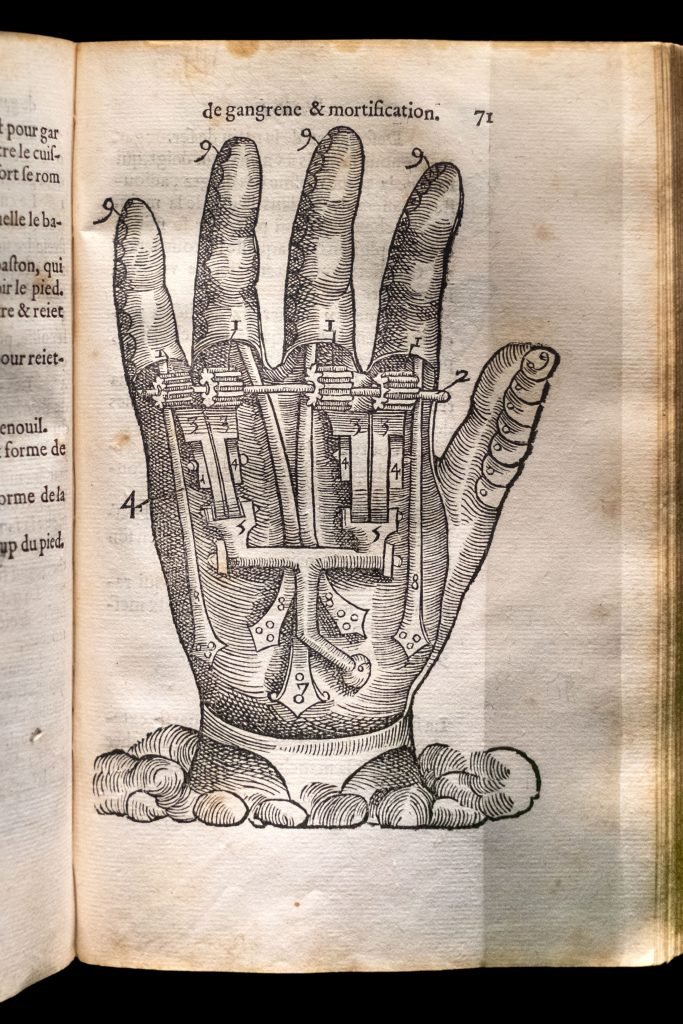The history and future of prosthetics
Fish Insurance launched the first insurance policy designed specifically to protect prosthetic and orthotic devices back in 2014. The policy may not have been around for that long, but you may not realise that prostheses have actually been around for thousands of years.
Ancient Egypt
The first prosthesis dates to Egyptian times, but it wasn’t an artificial arm or a leg as you might expect. It was a big toe – suggesting that early prosthetics were used for identity and aesthetic purposes. Egyptians traditionally wore sandals, so it’s interesting that these were an important enough fashion staple 3,000 years ago to warrant the creation of a prosthetic toe!
Roman Times
Possibly the first ‘disability hero’ and the first documented wearer of a prosthetic limb was Roman general Marcus Sergius. He reportedly lost his right hand in battle and was given a prosthesis made of iron to allow him to hold his shield and carry on fighting. It worked – he went on to have a long military career.

The Dark and Middle Ages
Prosthetics didn’t advance much during the Dark or Middle Ages. Most were designed as a result of injuries sustained in battle and didn’t differ much from General Sergius’s iron hand many hundreds of years before. Outside of battle, very wealthy people could be fitted with a peg leg or a hooked hand, which helped with day-to-day function but didn’t mimic limbs particularly well.
The 16th century
The early 16th century was when significant advances in prosthetic limbs – as well as amputation surgery – started to happen. A doctor named Ambroise Pare was the first to introduce a hinged prosthetic hand (you can see his vision of a prosthetic hand sketched below) and a leg with a locking knee joint, and his techniques are still used today. His colleague, a locksmith named Lorrain, also made an important contribution to the field of prosthetics by using leather, paper, and glue in place of heavy iron.

The 17th – 19th centuries
In 1696 the first non-locking below-knee prosthesis was developed by Pieter Verduyn and would later become the blueprint for today’s joint and corset devices.
1800 gave us the “Anglesey Leg”, so called because it was worn by the Marquess of Anglesey who lost his leg in the Battle of Waterloo. Designed by James Potts, it had a steel knee joint and was controlled by catgut tendons from the knee to the ankle.
The design was improved in 1846 by Benjamin Palmer who added an anterior spring, smoothed the appearance and concealed the tendons.
In 1863 Dubois Parmlee invented a prosthesis with a suction socket, polycentric knee and multi-articulated foot, and in 1868 Gustav Hermann suggested using aluminium instead of steel to make prosthetics lighter. However, it wasn’t until 1912 that this would become a reality when Marcel Desoutter, a famous English aviator, lost his leg in an aeroplane accident. He made the first aluminium prosthesis with the help of his brother Charles, an engineer.
American Civil War
There was a dramatic increase in the number of amputees following the American Civil War, and the prosthetics industry needed to improve to meet the demand. James Hanger, one of the first amputees of the war, developed the “Hanger Limb” from whittled barrel staves. With hinged joints at the knee and ankle it was the most advanced limb in the history of prosthetics and the prosthetics company Hanger founded still exists today.
20th Century
The next advance in technology didn’t come until 1946 when researchers developed a suction sock for lower-limb amputees. Similar attachment technology is still in use today.
In the 1970s – around the time Fish Insurance was established – an inventor by the name of Ysidro M. Martinez (who was an amputee himself) developed a lower-limb prosthesis that focused on improving movement and reducing friction. It relieved pressure and made walking more comfortable, which improved the lives of many future patients.
Further advancements have meant that nowadays devices are much lighter, usually made of plastic, aluminium and composite materials.
The future of prosthetics…
It may have taken thousands of years to get from a humble prosthetic toe to the functional devices we have today, but advancements are coming thick and fast. So, how might prosthetics look over the next few years?
With 3D printing advancing and becoming more affordable, the possibility of anyone being able to easily design and print a prosthetic limb could soon become a reality. New 3D scanning and body modelling technology could also enable people to 3D scan their limbs and have prosthetics modelled after them, making for more natural fitting and appearance.
New state-of-the-art prosthetics that take in data on how the wearers walk and build algorithms to anticipate their intentions are being built. These developments are intended to help those using prosthetic devices to move in the most natural manner possible.
Even more impressive, researchers are developing versions of bionic limbs, controlled by thought. They attach to an implant inserted directly into the bone, and nerve reassignment surgery then allows brain signals to directly control movement.
Aesthetics, too, now play an important part. The Alternative Limb Project not only creates natural looking, life-like limbs using silicon, but also imaginative bespoke designs which include a Swarovski crystallised leg and an arm entwined with dragons – perfect for Game of Thrones fans!
Whether 3D-printed or avant-garde prosthetics become the norm, it’s clear that the prosthetics industry isn’t slowing down.

